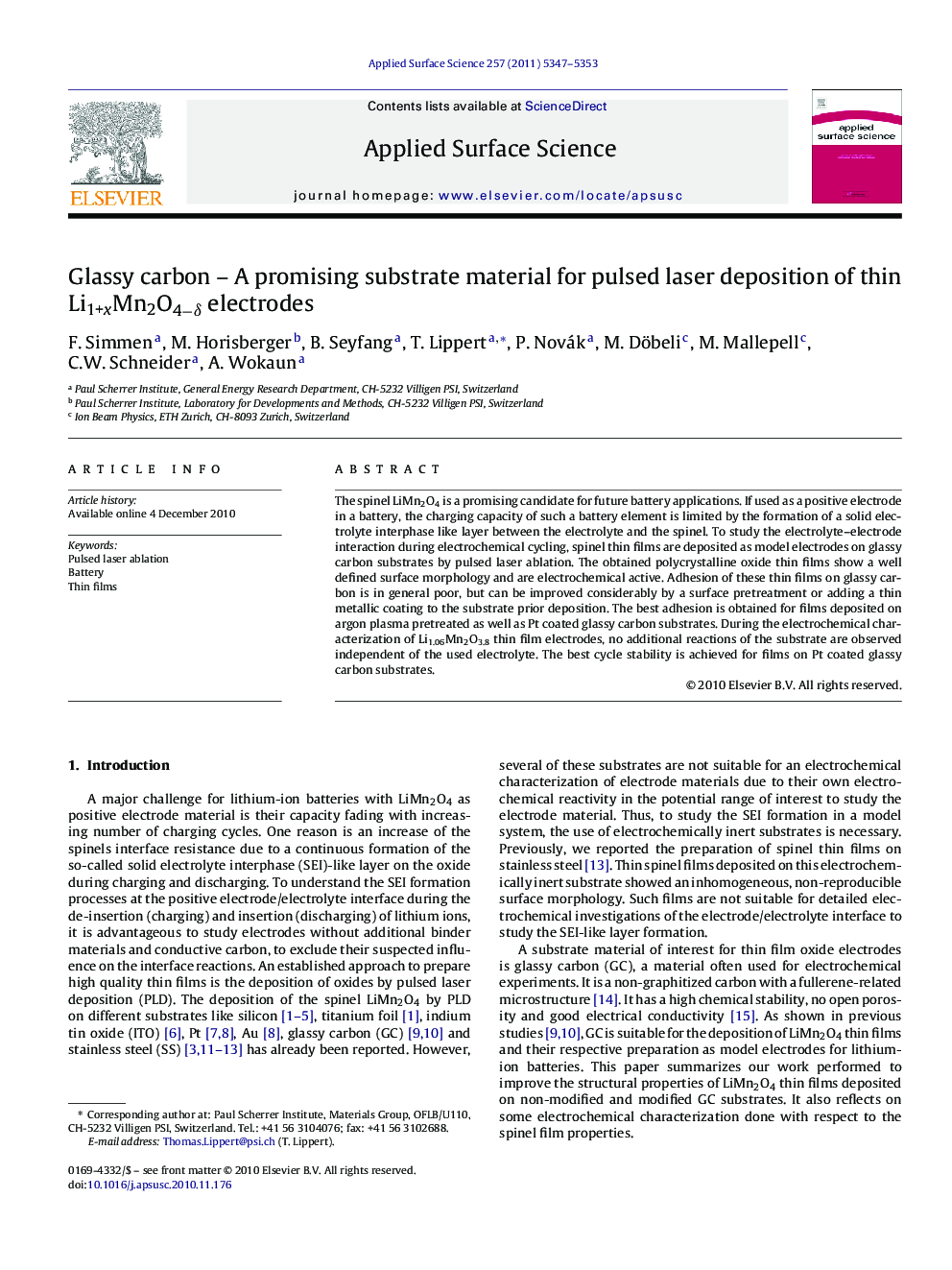| Article ID | Journal | Published Year | Pages | File Type |
|---|---|---|---|---|
| 5364379 | Applied Surface Science | 2011 | 7 Pages |
The spinel LiMn2O4 is a promising candidate for future battery applications. If used as a positive electrode in a battery, the charging capacity of such a battery element is limited by the formation of a solid electrolyte interphase like layer between the electrolyte and the spinel. To study the electrolyte-electrode interaction during electrochemical cycling, spinel thin films are deposited as model electrodes on glassy carbon substrates by pulsed laser ablation. The obtained polycrystalline oxide thin films show a well defined surface morphology and are electrochemical active. Adhesion of these thin films on glassy carbon is in general poor, but can be improved considerably by a surface pretreatment or adding a thin metallic coating to the substrate prior deposition. The best adhesion is obtained for films deposited on argon plasma pretreated as well as Pt coated glassy carbon substrates. During the electrochemical characterization of Li1.06Mn2O3.8 thin film electrodes, no additional reactions of the substrate are observed independent of the used electrolyte. The best cycle stability is achieved for films on Pt coated glassy carbon substrates.
Research highlightsⶠThe spinel LiMn2O4 is a promising candidate for future battery applications. ⶠSpinel thin films are used as model system to study the solid electrolyte interphase formation. ⶠGood electrochemical properties of LiMn2O4 films grown on glassy carbon substrates. ⶠPoor adhesion of LiMn2O4 on glassy carbon can be considerably improved.
